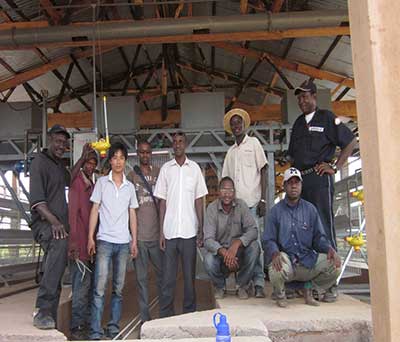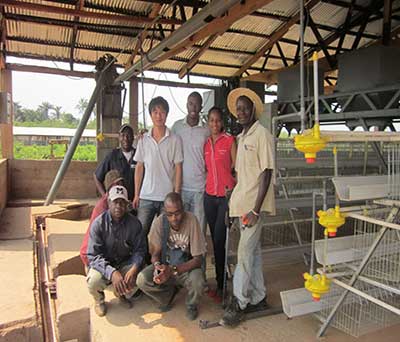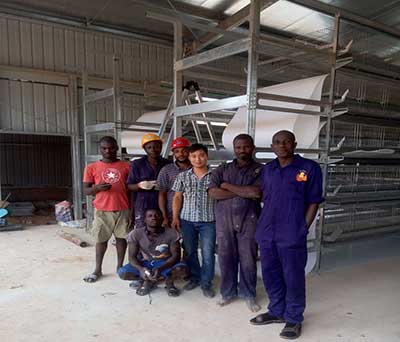Keeping chickens in a cage-free environment has become increasingly popular in recent years, with more and more farmers and backyard enthusiasts making the switch from traditional coops to cage-free housing systems. These systems offer a wide range of benefits for both the birds and their caretakers, including better health and well-being, increased egg production, and reduced maintenance costs.
If you are considering a cage-free chicken house for your birds, it’s essential to understand the advantages and potential drawbacks of this type of housing system. In this article, we will explore the top benefits of a cage-free chicken house and why it might be the best choice for your feathered friends.

Advantages of a Cage-Free Chicken House
Better Bird Health:
One of the primary benefits of a cage-free chicken house is improved bird health. In a cage-free environment, chickens have the freedom to move around, spread their wings, and engage in natural behaviors such as scratching and dust-bathing. This increased activity can help keep birds healthy and reduce the risk of diseases such as feather-pecking and cannibalism.
Increased Egg Production:
Studies have shown that chickens housed in cage-free environments tend to lay more eggs than their caged counterparts. This is likely due to the reduced stress and increased activity levels that come with cage-free housing. With more eggs comes the potential for increased profits for farmers and higher egg production for backyard enthusiasts.
Reduced Stress on Chickens:
Cage-free housing systems can also help reduce stress on chickens. In traditional coops, chickens are often crammed together in small cages with limited space to move around. This can cause stress and lead to negative behaviors such as feather-pecking and cannibalism. In a cage-free environment, chickens have more space to move around, which can lead to reduced stress and improved overall well-being.
Lower Maintenance Costs:
While cage-free housing systems may require a higher initial investment, they can actually save money in the long run. Because chickens are less stressed and healthier in a cage-free environment, they may require less veterinary care and medications. Additionally, cage-free systems can be easier to clean and maintain, reducing the need for expensive cleaning supplies and labor.
Furthermore, chickens that are kept in a cage free chicken house tend to lay more eggs than those that are kept in cages. This is because they are less stressed and more comfortable in their environment. In addition, the eggs that are produced by cage-free chickens tend to be larger and more nutritious than those produced by caged chickens.
Improved Animal Welfare
Finally, investing in a cage free chicken house is a way to demonstrate a commitment to animal welfare. Consumers are becoming increasingly aware of the conditions in which their food is produced, and they are demanding more humane treatment of animals.

Another benefit of a cage free chicken house is that it provides a healthier environment for the chickens. When chickens are kept in cages, they are often subjected to poor living conditions, such as overcrowding and unsanitary conditions. These conditions can lead to the spread of diseases and illnesses, which can ultimately affect the quality of the meat and eggs that the chickens produce.
However, when chickens are allowed to roam freely in a cage free chicken house, they are less likely to become sick. They have more space to move around, and they have access to fresh air and natural light. As a result, they are healthier, happier, and more productive.
By investing in a cage free chicken house, farmers can show that they care about the welfare of their animals. They can provide a safe and comfortable environment for their chickens, and they can ensure that they are treated with respect and compassion.
In conclusion, there are many benefits to investing in a cage free chicken house. Not only does it provide a more humane environment for the chickens, but it can also lead to increased productivity and higher quality eggs and meat. By investing in a cage free chicken house, farmers can demonstrate their commitment to animal welfare and provide a healthier and more sustainable source of food for consumers.
FAQs:
Q: What is a cage-free chicken house?
A: A cage-free chicken house is a type of housing system that allows chickens to move around freely and engage in natural behaviors, rather than being confined to small cages.
Q: What are the benefits of a cage-free chicken house?
A: Cage-free housing can lead to improved bird health, increased egg production, reduced stress on chickens, and lower maintenance costs.
Q: How does a cage-free housing system increase egg production?
A: Chickens housed in a cage-free environment tend to be less stressed and more active, which can lead to increased egg production.
Q: Are there any potential drawbacks to using a cage-free housing system?
If you are considering investing in a cage free chicken house, be sure to do your research and find a reputable supplier. With the right equipment and management practices, you can create a thriving and profitable business while also contributing to a more sustainable and humane food system.
A: Cage-free systems may require a higher initial investment and may not be suitable for all climates or environments.











